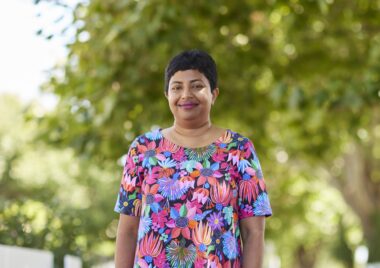A microscopic view of the before and after: this short clip shows how a typical immotile sperm become motile following exposure to the ultrasound technique.
Exposing “lazy” human sperm to ultrasound can increase their swimming activity more than three-fold and improve the success rate of assisted reproduction, a new study has found.
Engineering researchers at Monash University have shown that 20 seconds of ultrasound at 800 mW and 40 MHz increased measures of sperm motility (their swimming ability) by up to 266% and reduced the proportion of inactive or ‘nonprogressive’ sperm from 36% to just 10%.
The technique could be a rapid and non-invasive treatment for male infertility which affects one in 35 men and accounts for around 30% of all fertility problems. The study, published in Science Advances, suggests a promising new treatment for asthenozoospermia - a condition where sperm have reduced ability to move - and a major cause of reduced fertility in men.
To study the effects of high-frequency ultrasound, researchers in the Applied Microfluidics and Bioengineering (AMB) Lab in the Department of Mechanical and Aerospace Engineering constructed a system to trap single sperm cells in microdroplets within which they could be exposed to sound waves while being examined and filmed at high speed under a microscope.
“Ultrasound not only increased the swimming velocity of sperm but also promoted almost two-thirds of lower grade sperm to a higher motility grade,” Ali Vafaie, a Monash PhD candidate and the study’s lead author, said.
“Sperm with low motility before we applied ultrasound showed the greatest increase in motility after ultrasound exposure, and we know from clinical data that even a 10% increase in sperm motility leads to an increase of 8% in pregnancy rate.”
Initially, 36% of sperm were graded as nonprogressive (grade C), 38% slow progressive (grade B), and 26% rapid progressive (grade A); after exposure, only 10% remained in grade C, with 42% in grade B and 48% in grade A. The testing showed no detrimental effects of ultrasound on the integrity of DNA in the sperm or their viability.
“The ultrasound technique has tremendous potential to boost success rates in even the most challenging cases,” Dr Reza Nosrati, Director of the AMB Lab, said.
Dr Nosrati said higher sperm motility allows for the use of assisted reproduction options that are less invasive, and have higher success rate with lower risks to the health of offspring.
“By making immotile sperm motile and motile sperm more motile, we can help more patients meet the minimum requirements to have conventional IVF rather than more invasive and costly options like intracytoplasmic sperm injection (ICSI), which involves injecting a single sperm into each egg using a very fine needle.”
The effects of ultrasound exposure, and particularly the consistency and duration of the improvement in motility seen in the donor samples, will now need to be tested on the sperm of men whose fertility is low due to asthenozoospermia.
DOI: 10.1126/sciadv.adk2864
MEDIA ENQUIRIES:
Courtney Karayannis, Senior Media Adviser
Monash University
T: +61 408 508 454 or [email protected]
Visit Monash Lens for expert insights and commentary
Reach the Monash University Media on +613 9903 4840 or [email protected]


